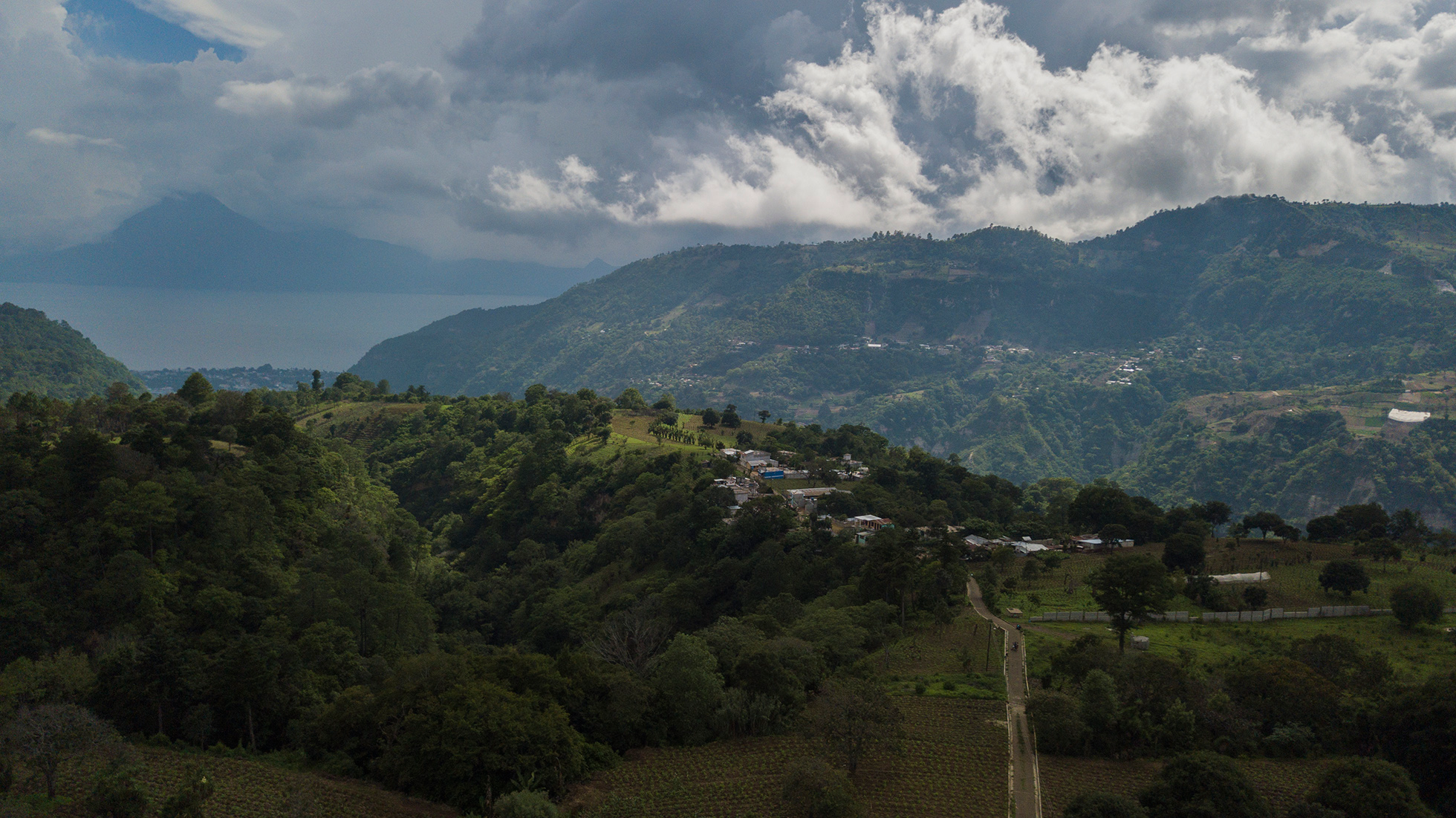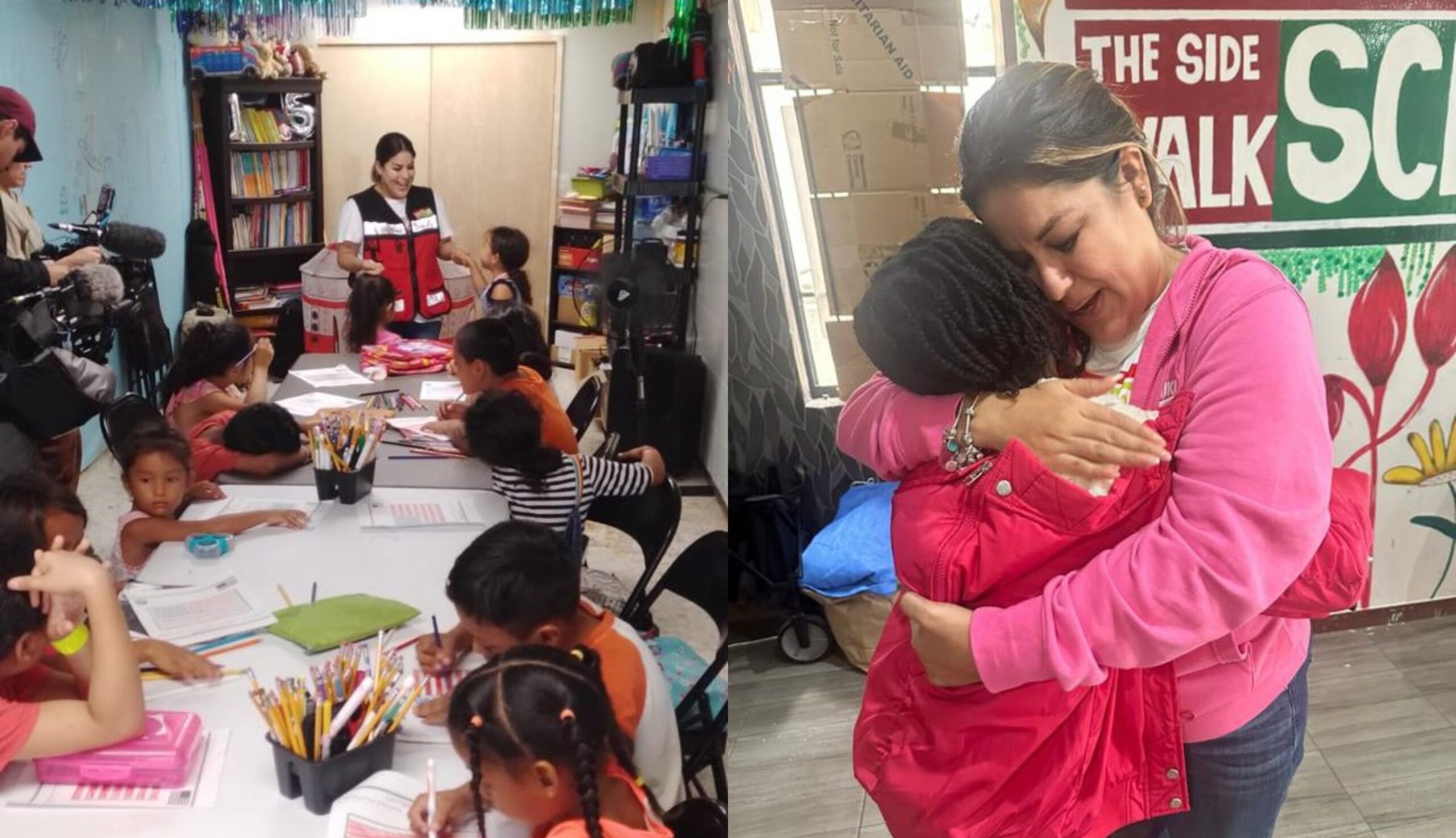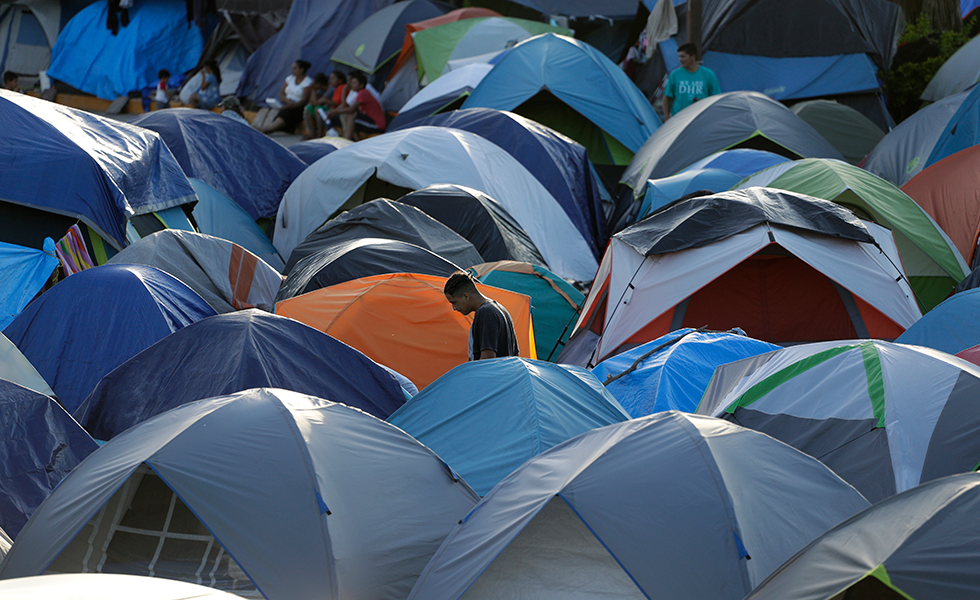Part 2 of a collaboration between the Texas Observer and the Border Center for Journalists and Bloggers with support from the Pulitzer Center on Crisis Reporting. Read Part 1.
Janio had barely slept when guards woke him at 4 a.m. on March 19. U.S. immigration officials had given him less than a day’s notice of his deportation to Guatemala from the Port Isabel detention center in South Texas in the middle of the coronavirus pandemic.
The officials put Janio, a 20-year-old Mayan Quiché Guatemalan with slick black hair and a boyish grin, and other detainees in blue jumpsuits, chained them, and took their temperatures. Janio recalls they swabbed his nose for a test that he thought might be for COVID-19. But at the time, ICE wasn’t routinely testing deportees for coronavirus. Then the deportees boarded the flight from Brownsville to Guatemala City—without masks, gloves, or hand sanitizer. He wasn’t told whether he or others aboard his flight had already contracted the virus. (The Observer is withholding Janio’s last name because migrants deported in the pandemic have faced threats.)
The deportation flight touched down at the Guatemalan Air Force base in Guatemala City a few hours later. “I thought I was going to reach the dream, but it was the opposite,” Janio said. He and the other deportees walked in a single file from the tarmac to the base’s newly remodeled welcome center. Janio filled out paperwork and left. He was not given a physical or a COVID-19 test, and says he was not ordered to quarantine.
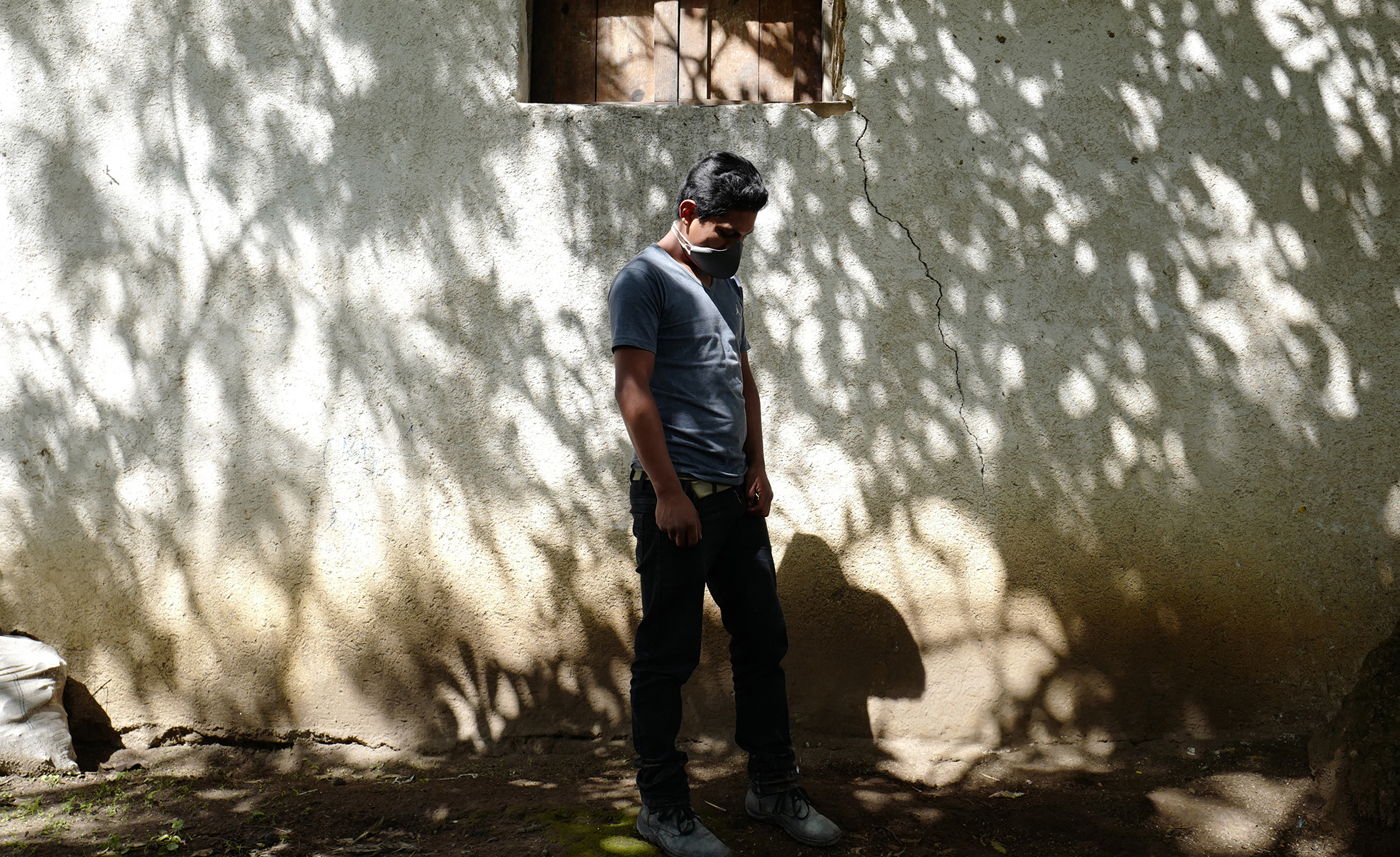
On March 23, another flight carrying 85 deportees left El Paso touching down at the same Guatemalan airbase around 9:30 a.m. Two sick men were transferred to a hospital about 40 minutes away. The rest, including 29 minors, were instructed to wait, crammed into one room, according to a government official who was present, but is not authorized to speak to the media. They went without food. When the newly imposed national curfew from 6 p.m. to 6 a.m. approached, government employees were allowed to go home, though they still didn’t know if they had been exposed to the virus. Migrants, the youngest only 6 years old, were taken to the nearby public airport, where rows of mattresses had been laid down on the floor.
The next day, the health ministry announced the two sick migrants had tested negative for COVID-19, but chaos fueled by both governments had already been exposed. The U.S. continues to deport hundreds of immigrants even as its reported cases rapidly increase, and Guatemala lacks protective equipment, tests, and space to quarantine them. “From that day, everything went to hell,” the government official told the Observer.
Just two days later, on March 26, more than half of the 42 deportees that arrived in Guatemala City on a flight from Texas tested positive for COVID-19, in what Guatemalan President Alejandro Giammattei later called the vuelo maldito, the cursed flight. By April, at least 50 percent of all arriving deportees had tested positive, according to Guatemalan health minister Hugo Monroy, who later resigned amid criticism of his handling of the pandemic response. By the summer, there were more than 200 cases in Guatemala involving returnees from the U.S.
Through ongoing deportations, the United States, which now has had more COVID-19 cases than any nation worldwide, has become a major exporter of the virus to Guatemala and other countries, too. Since the pandemic began, U.S. Immigration and Customs Enforcement (ICE) has reported more than 4,000 cases among its detainees. Thousands of deportees left on at least 450 flights bound for Latin America and the Caribbean between February 3 and August 4, according to the Center for Economic Policy and Research. At least 65 of the 115 flights to Guatemala in that period originated in Texas.
Guatemalan officials and advocates say the flights have formed a detention-to-deportation pipeline that has spread the coronavirus through already vulnerable deportees, contributing to a crash in Guatemala’s health care system and sparking violent anti-deportee backlash in receiving communities. In June, Human Rights Watch called for a suspension of all deportations to protect public health.
ICE has defended its detention and deportation practices, saying that the agency began screening Guatemalan deportees for COVID-19 symptoms on March 11 and did not allow anyone with a temperature above 100.4 degrees to board a flight. Separately, the agency adopted its first COVID-19 rules to beef up protections for migrants inside ICE detention centers on April 10. But it did not begin testing Guatemalan migrants prior to deportation until April 26, according to an agency spokesperson. It wasn’t until May that ICE began requiring detainees and staff to wear masks before and during deportation flights. “ICE’s expectation is that each country will continue to meet its international obligation to accept its own nationals,” the spokesperson wrote in an email.
Meanwhile, the Trump administration has used the pandemic to halt almost all immigration across the southern border. Current COVID-related restrictions have left more than 40,000 migrants and asylum seekers stranded in Mexico. The White House said in a statement that the measures were necessary “to protect the health and well being of our citizens during this public health crisis.”
So far, there is no evidence that detaining and deporting immigrants is reducing the spread of COVID-19, especially since the U.S. has higher new infection rates than most other countries, according to University of Michigan History Professor Alexandra Minna Stern, who studies the intersection of public health and immigration policy. She calls restrictive border policies a “classically reactive strategy that is grounded in fear, not public health.” At the same time the U.S. has rapidly expelled immigrants, it continues to detain tens of thousands of immigrants in “detention camps rife for the transmission of any virus,” Stern said.
So with more cases in the U.S. than any other country, which poses the real public health threat: migrants like Janio arriving at the border, or the U.S. continuing to detain and deport migrants during the pandemic?
Janio is part of an exodus of Guatemalans who leave because of high rates of unemployment, worsening farming conditions caused by climate change, and gang-related or domestic violence. Many head to California, Florida, or Texas, the U.S. states with the largest Guatemalan populations, according to Pew Research Center data. Despite the U.S. reliance on their low-wage labor, migrants like Janio face an increasingly elaborate immigration detention and deportation machine designed to keep them out.
Deportations from the U.S. to Guatemala have doubled in the past decade. And the U.S. has increasingly relied on Mexican and Central American governments as participants in this enforcement apparatus.
Guatemalan President Giammattei promised in his 2019 campaign to limit cooperation with the U.S., but has struggled to follow through given his country’s dependence on U.S. aid and ties built through decades of migration. When the former doctor and prison director took office in February, the number of deportations was expected to reach 52,000, just like the year before.
Then Guatemala confirmed its first coronavirus case on March 13, six days before Janio and other deportees arrived from the U.S. As a trained physician, Giammattei recognized the public health threat posed by travelers and deportees who entered the country unscreened and before Guatemala could implement quarantine procedures. So he banned the entry of Canadian and U.S. citizens that same day, and suspended classes, large gatherings, and public transportation. He soon ordered the closures of non-essential businesses and imposed the nighttime curfew. On March 17, when Janio was still detained in Texas, the Guatemalan Foreign Ministry announced the suspension of deportation flights until the U.S. carried out proper sanitary controls.
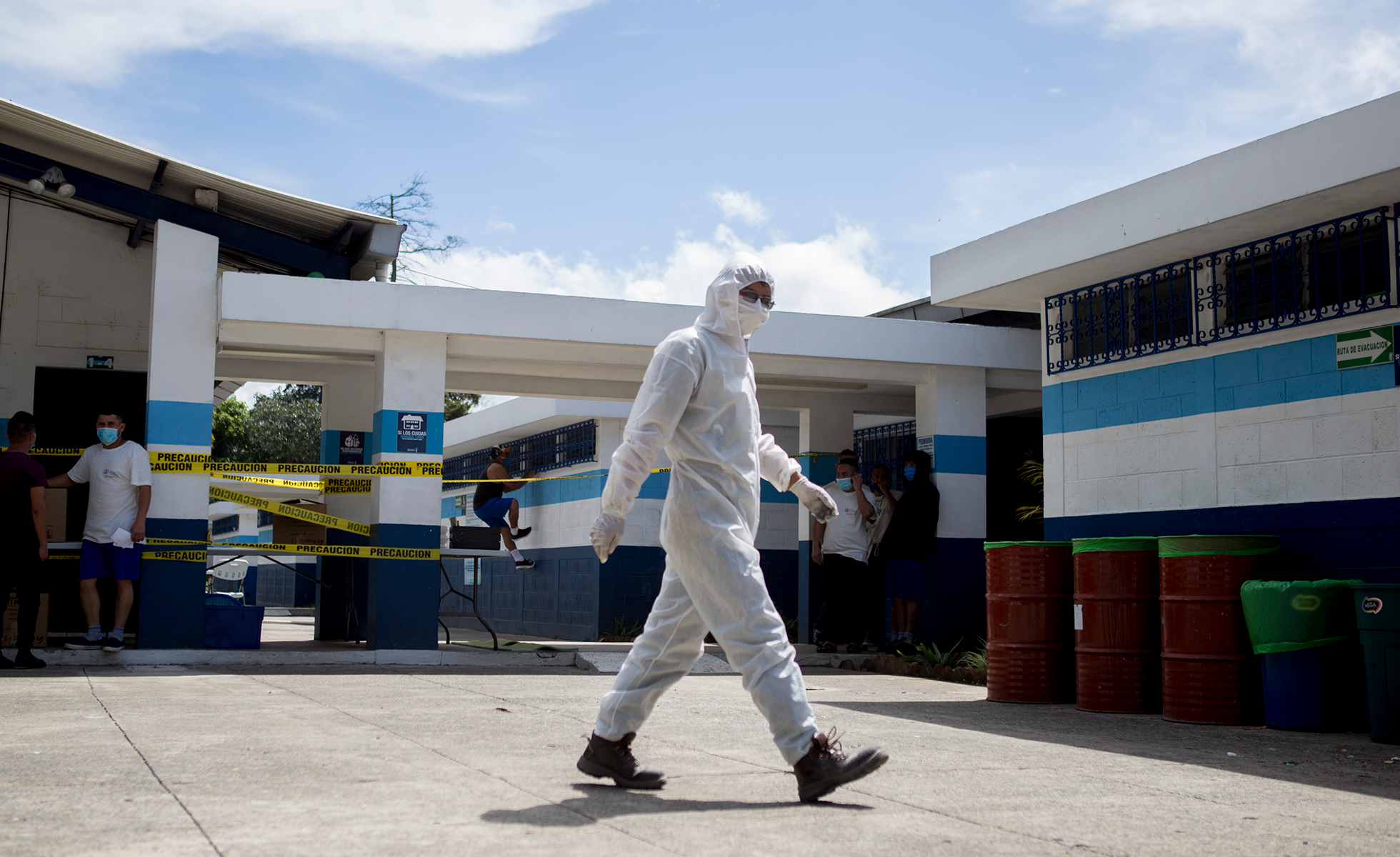
But the foreign ministry announced the country would resume receiving deportation flights two days later, the day Janio was deported. Since March, Guatemala has suspended deportation flights several times. The country never intended to suspend deportation flights indefinitely because denying repatriation of Guatemalan citizens would violate their rights, explained Carlos Woltke, who specializes in migrant rights within Guatemala’s ombudsman’s office. Instead, Guatemala was trying to use one of the few tools it had to pressure the U.S. to enact stricter health measures to screen deportees.
“Guatemala is an ally to the U.S., but the U.S. is not an ally to Guatemala,” Giammattei said in May.
When Janio first decided to migrate in February, he didn’t worry about the coronavirus, or about quarantines and curfews that would soon affect cities all along his planned 1,200-mile route. He knew if he stayed in Patanatic, Guatemala, an Indigenous community of 2,000 in the hills overlooking the volcano-lined Lake Atitlán, he would barely scrape by supporting his family working construction. The slight young man who stands 5’3” had the chance to pay 60,000 quetzales, or about $7,800 USD, for a coyote to take him to the U.S. His objective was to join his brothers in New York and earn wages to send back home. If he could get there, he could earn enough to send money back for his kids: 2 years old and 11 months, plus a third on the way. “I thought about them,” he said. “We don’t have land or a house and they just keep growing.”
Janio and other Guatemalans, including a friend from back home, traveled 10 days with a coyote. When they reached the U.S.-Mexico border near Brownsville and it was time to cross the Rio Grande, the migrants split into two groups. Janio’s friend made it undetected. “Unfortunately, I didn’t get through,” Janio said. He was locked up for several days by U.S. Customs and Border Protection (CBP) agents in a cold holding cell with others. He didn’t request asylum and was soon placed into deportation proceedings.
The Trump administration had made clear through restrictive policies and ongoing construction of the border wall that it viewed migrants like Janio as a threat. Other Central Americans, who fled gangs, abusive partners, or corrupt security forces, faced mounting barriers. When Janio was detained in early March, COVID-19 posed another complication.
At the same time the U.S. has rapidly expelled immigrants, it continues to detain tens of thousands of immigrants in “detention camps rife for the transmission of any virus.”
U.S. immigration officials were failing to contain the spread of the coronavirus in group holding cells and detention centers where migrants sleep in cramped, unsanitary conditions, according to lawsuits and complaints later filed by attorneys and human rights groups.
From the border holding cell, Janio was transferred in mid-March to Port Isabel Detention Center, an ICE facility in Los Fresnos, Texas, that can hold up to 1,200 detainees. It was in Port Isabel that Janio began to fear the virus. He heard some detainees there already had COVID-19, even though ICE had not yet publicly confirmed any cases.
ICE issued its first Pandemic Response Requirements for detention centers on April 10 and revised them again in June, beefing up requirements for staff to comply with health authorities, to keep a 6-foot distance with detainees, and to identify detainees with underlying medical conditions that put them at additional risk.
But in a series of reports by groups like the American Civil Liberties Union, advocates and attorneys had long criticized the agency for inadequate treatment for conditions like high blood pressure and diabetes, and medical negligence in immigration detention as a dangerous combination that already resulted in preventable deaths and that spread communicable diseases prior to the pandemic. The Office of Inspector General for the Department of Homeland Security found problems with the early COVID response in a report issued in June.
To date, ICE has confirmed three coronavirus-related deaths of detainees in its custody: Carlos Ernesto Escobar Mejia, 57, from El Salvador; Onoval Perez-Montufa, 51, from Mexico; and Santiago Baten-Oxlaj from Guatemala.
Baten-Oxlaj, a 34-year-old father of three, was the youngest to die of COVID-19 in ICE custody. He had emigrated from Guatemala in 2005 and was living near Atlanta when he was detained by ICE on March 2 after a misdemeanor conviction of driving under the influence. Inside Stewart Detention Center in Georgia, Baten-Oxlaj, who had diabetes, began running a fever. He spent two days in the center’s “medical observation unit” before being transported to a hospital with COVID-19 symptoms on April 17. He died May 24 of COVID-related complications, according to ICE, leaving behind a wife and three children, ages 16, 15, and 5 years old. In a statement, ICE said it is “firmly committed to the health and welfare of all those in its custody.”
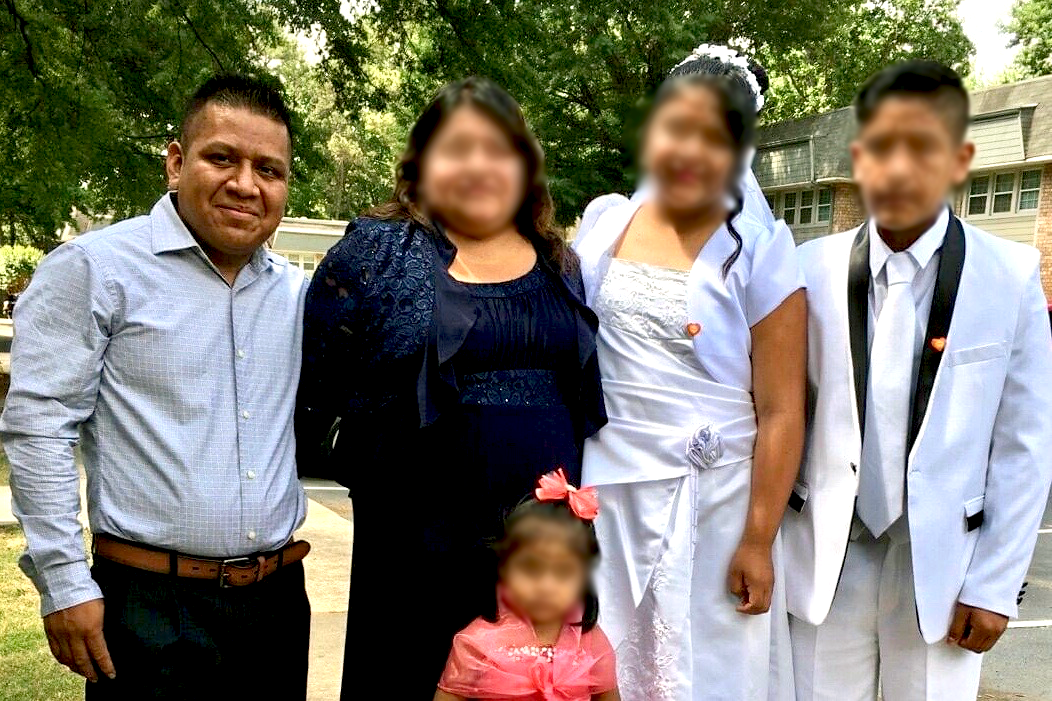
Nonprofits and detainees alike have raised questions about whether ICE has failed to accurately report and respond to COVID-19 cases in detention. By the end of March, after Janio’s deportation, the Rio Grande Valley Equal Voice Network (RGV-EVN), a coalition of nonprofits in South Texas, began receiving calls from other detainees at Port Isabel reporting suspected cases based on their own or cellmates’ symptoms. Nonprofits wrote to ICE requesting the release of detainees and immediate enhanced prevention measures, such as increased testing, the suspension of transfers, and free hygiene products. “They are playing with our lives,” one detainee who asked to remain anonymous said in a statement released by the network. ICE didn’t respond. So, more than 50 detainees organized a hunger strike.
That strike fizzled out within days after ICE put protesting detainees into solitary confinement in retaliation. But nonprofits wrote more letters and filed lawsuits.
In April and May, calls from detainees in the Port Isabel facility and elsewhere were “getting more and more desperate,” said Norma Herrera, a community organizer with RGV-EVN. “People are feeling like there’s no way to keep themselves safe.” In April, ICE finally confirmed that a contractor working at Port Isabel had tested positive, though the Observer separately reported that contractor cases were going unreported by the agency. On May 6, ICE confirmed the first case involving a detainee there. Later at least 130 detainees had tested positive in Port Isabel.
Dozens of outbreaks have been reported in ICE detention centers in Texas and other states. By August, 17 sites had reported between 100 and 300 positive cases among detainees. Santos Alfaro, a 37-year-old Guatemalan, spent five months in Otero County Processing Center near El Paso waiting for a judge to consider his asylum case. So far 150 cases have been reported there. Alfaro, who was deported in July, compared cells where infected detainees were isolated to coffins. Those who tested negative, like him, were treated “like dogs,” he said.
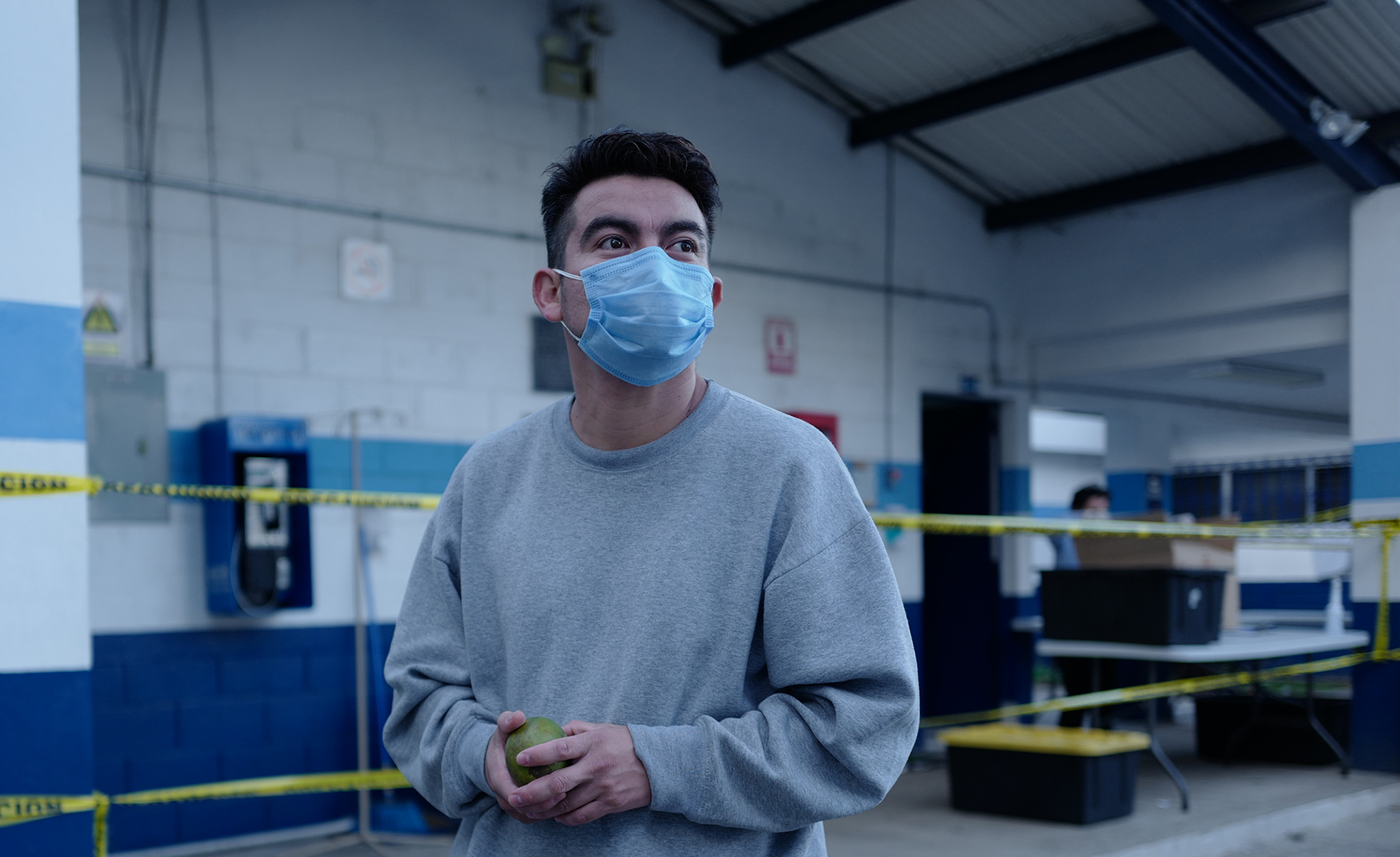
Janio went for a walk around his neighborhood soon after arriving home to the tight-knit, rural community of Patanatic. “Everyone started to ask why I was outside,” he said. “They started to say many things that weren’t true.” Mainly, they worried he had brought COVID-19 from the U.S. to Guatemala. Neighbor after neighbor showed up at the family’s three story white house, which is still being built with money sent back by his brothers in the U.S. “They just came to bother us, just because of the fear people had,” said Janio’s mother.
Such fear arises from a deeper problem: Indigenous Guatemalans, who make up nearly 50 percent of the population and speak more than 20 languages, are often cut off from public health care services, either because of geography or institutional racism, said Ana Cordón, a doctor with Wuqu’ Kawoq, a health care NGO based in Tecpán, Chimaltenango. Her organization works in dozens of communities providing medical care to Indigenous Guatemalans. Residents know that once the coronavirus arrives in their communities, reaching a hospital and getting any care may be hours away, or impossible. “This pandemic only came to open the wounds of a broken system,” Cordón said.
For Janio, neighbors’ fears forced him to retreat to an old family house where he and his seven siblings grew up. The small shack sits about 45 minutes up a dirt path, with cracked adobe walls and a dirt floor. Soon, officials from the local health center came to check on him. But they couldn’t reach the shack, so he returned to the larger family house shared by more than a dozen people: Janio, his wife, daughter and son; his parents; plus his three brothers’ wives and their kids.
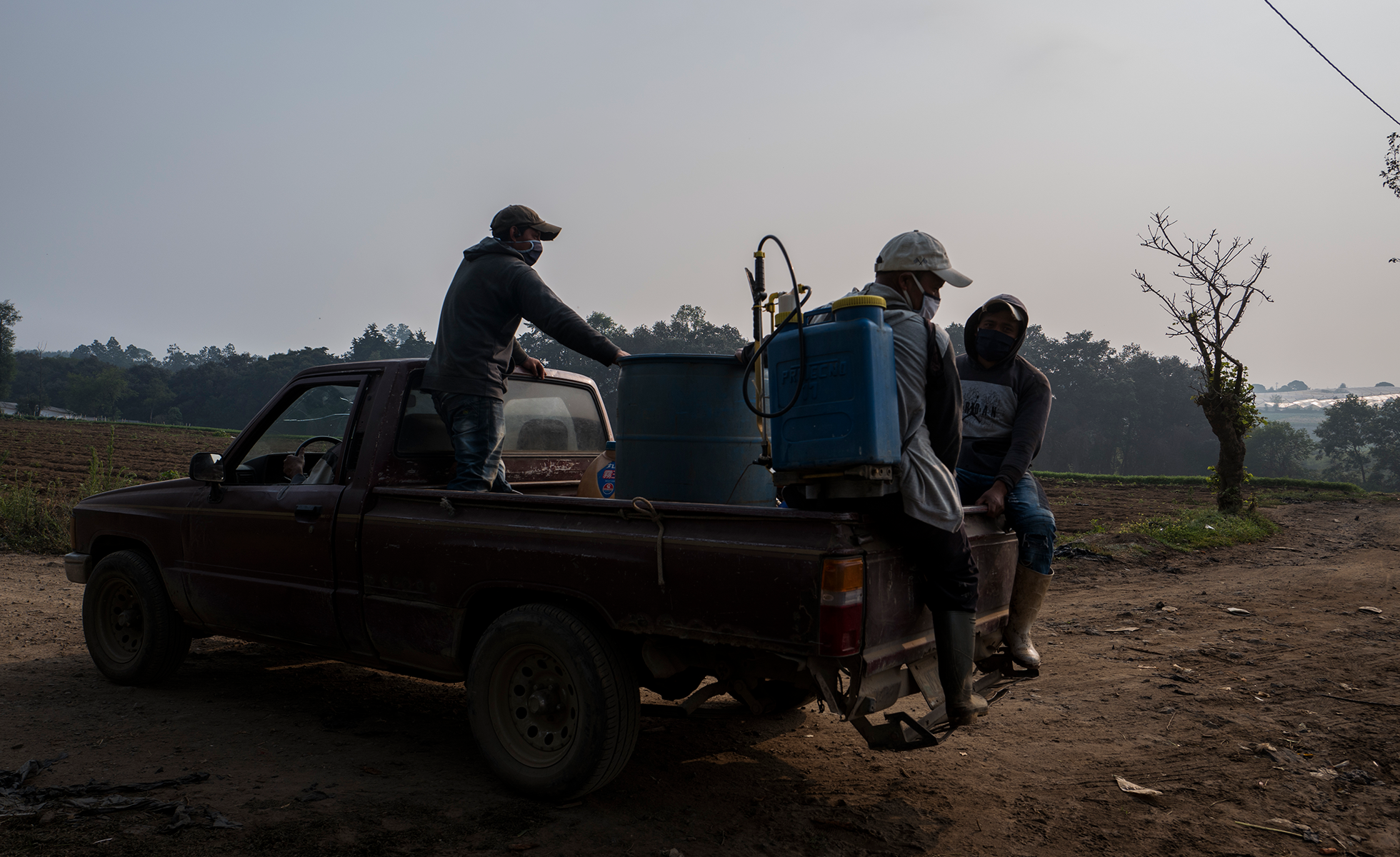
Local officials collected a sample they promised to send to a lab to test for coronavirus. Later more health officials arrived. Then local Indigenous leaders and two police officers paid a visit. Finally, federal health ministry officials arrived in full protective gear. No one provided any test results. Janio and his family began to see those visits as harassment—efforts to blame Janio for bringing the virus rather than offer help.
As cases of other Guatemalan deportees testing positive for COVID-19 increased, so did tensions in communities with returning deportees. In the lakeside town of Santa Catarina Palopo, a 20-minute drive from Janio’s home, residents threatened to set a returning deportee’s family on fire, even though the man had documents proving he had tested negative. In Xela, the country’s second largest city in the western highlands about 50 miles west of Lake Atitlán, residents threatened to burn down a shelter where the government was quarantining deportees for fear they would infect the community. In the town of Sacapulas, in the mountainous Quiché department about 130 miles northwest of Guatemala City, residents armed with rocks and machetes set up a roadblock to prevent the entry of two deportees. In the nearby town of Zacualpa, a hotel refused to rent a room for a deportee to self-isolate, so local authorities were forced to house him in a locker room in the town’s soccer stadium. Violence against returning deportees has also been reported in several towns in the department of Chimaltenango, which lies between Lake Atitlán and Guatemala City.
One community, Patzún, reported the first case of community transmission in April. So the federal government ordered a strict cordón sanitario, a health-related roadblock, to prevent non-emergency travel.
“Because of the pandemic, deportees are no longer welcome,” said Elsa del Carmen Meléndez, a nun who works in Zacualpa for the Pastoral of Human Mobility, a network of Episcopal religious leaders who aid migrants and refugees. “[The community thinks] it’s better for one person to die, than for everyone to die.”
Stigma has followed deportees since the 1990s, when the U.S. first began mass deportations of Central Americans, including some gang members, said Meléndez, who is originally from El Salvador and has worked with migrants in Guatemala for more than 20 years. Decades later, many deportees are still seen as criminals in returning communities, even when they have no criminal record. Many return depressed and struggle with culture shock. Some are rejected by families and by employers. But deportees are now facing “double trauma,” Meléndez said. “Now, not only are they deported, they are marked as infectious.”
“This pandemic only came to open the wounds of a broken system.”
Even after all those visits, Janio never received any written results to show whether he had tested positive for COVID-19. Although Guatemala’s federal government has developed nation-wide health protocols, they have been implemented unevenly. In the last three weeks of July, no samples taken from patients in the region where Janio lives have been tested because of a lack of resources, a doctor told the Observer. He requested that his name be withheld because he is not authorized to speak to the media.
There are signs that the Guatemalan healthcare system has basically collapsed, said Lucrecrecia Hernández Mack, a physician who served as Guatemala’s health minister from 2016 to 2017 and is now a congresswoman with Movimiento Semilla, an opposition party to the current president. In May, Hernández Mack documented how patients with COVID-19 symptoms were arriving at hospitals that hadn’t been designated for coronavirus care, making it impossible for healthcare workers to control the spread.
Soon, nearly all of the country’s limited ICU beds were taken by patients in critical condition. Meanwhile, quarantine centers for deportees exceeded capacity. The nation’s central laboratory soon had so many COVID-19 tests to process that it took weeks to get results and tests were lost. More than 600 health care workers have been infected and at least eight have died, according to health ministry data.
Janio has been working construction projects in Patanatic with his dad since his return. He took out a loan to get to the U.S. that will take much longer to repay with local wages—especially now that the pandemic has crippled the Guatemalan economy. He has remained healthy.
But in May, one of Janio’s brothers in New York City fell sick with a fever and a cough, tell-tale signs of the coronavirus, confirming the family’s fears about the virus in the U.S. in an unexpected way. Like many immigrants who support family abroad, the 29-year-old could not afford to self-quarantine and continued to work in construction. The brother took some precautions, but never got tested.
Despite his brother’s troubles, Janio is already thinking of going back to the United States.
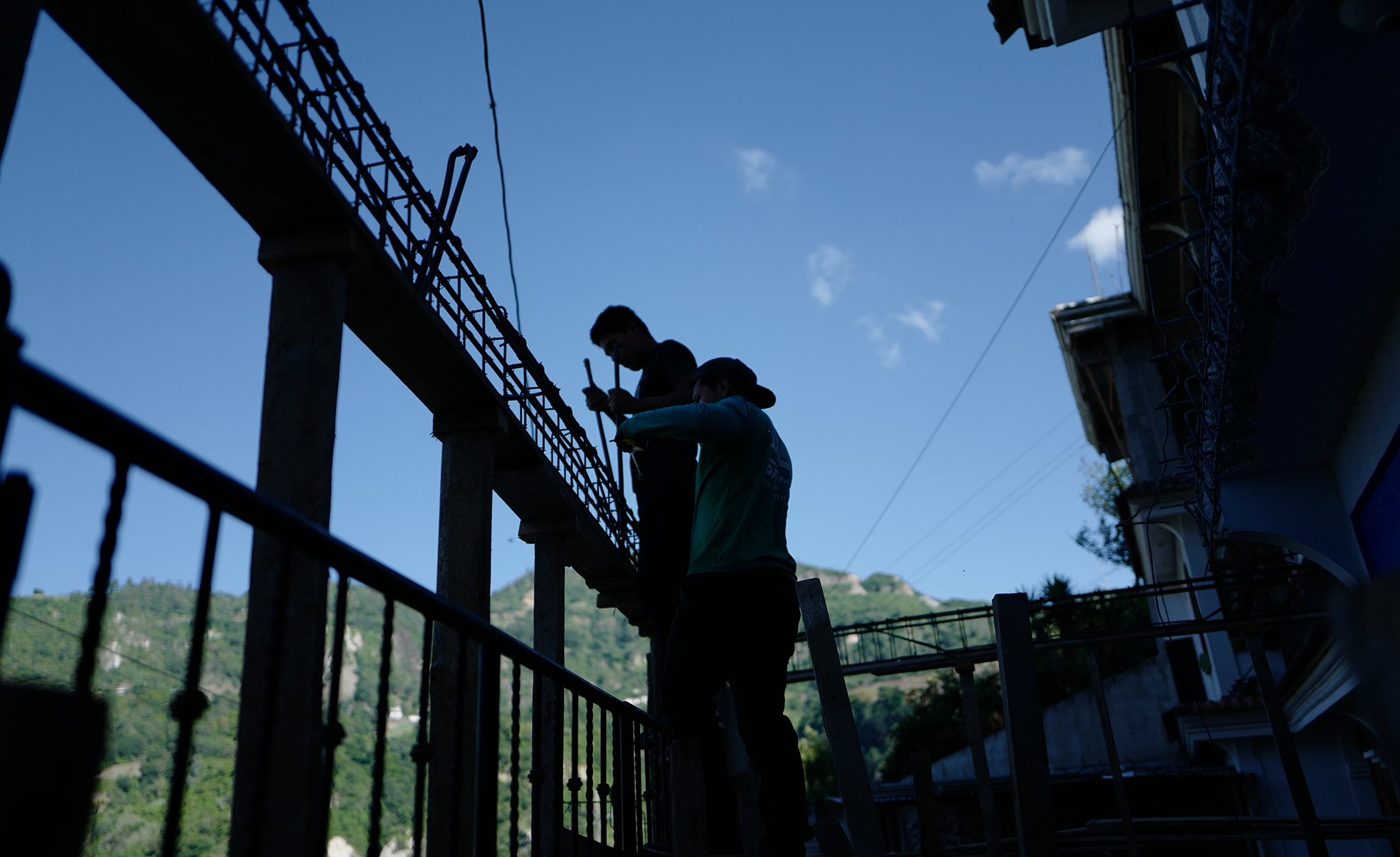
Repeat migration for deportees was already the norm pre-pandemic, says Anthony Fontes, a researcher at American University now conducting fieldwork on deportees in Guatemala. And now even fewer resources are dedicated to getting them to remain in their home country.
Some non-governmental programs that provide reintegration services to deportees have suspended operations, and officials from those in operation say the pandemic has made it nearly impossible to deliver services. It’s likely that many other deportees are already planning how to leave again, even though borders are essentially closed, Fontes said.
For Guatemalans like Janio, the benefits of migration to the U.S. still seem to outweigh the risks. “My goal is to make it there still,” he said. “Fear will always exist, but the situation forces me to.”
Anna-Catherine Brigida is a freelance journalist based in Nicaragua who has reported on migration from the region since 2015. She has covered migrant caravans, deportations, migrant deaths, and family separations for media outlets such as the Washington Post, the Guardian, TIME, Texas Monthly, and Al Jazeera. In 2019, she reported deaths of Guatemalan minors at the U.S. border as part of the Reporting the Border Fellowship through the International Center for Journalists and the Border Center for Journalists and Bloggers.
Morena Perez Joachin is a documentary photographer and freelance photojournalist based in Guatemala who identifies as Mestiza of Indigenous origins. She is dedicated to documenting issues related to Indigenous movements, environmental defense, migration, and gender. She has been a photographer for local newspapers and international media. During last two years she was creative producer of a documentary and independent film in Guatemala and Mexico. She founded an art and documentary local collective, Artefacto, for cultural projects in Guatemala.
